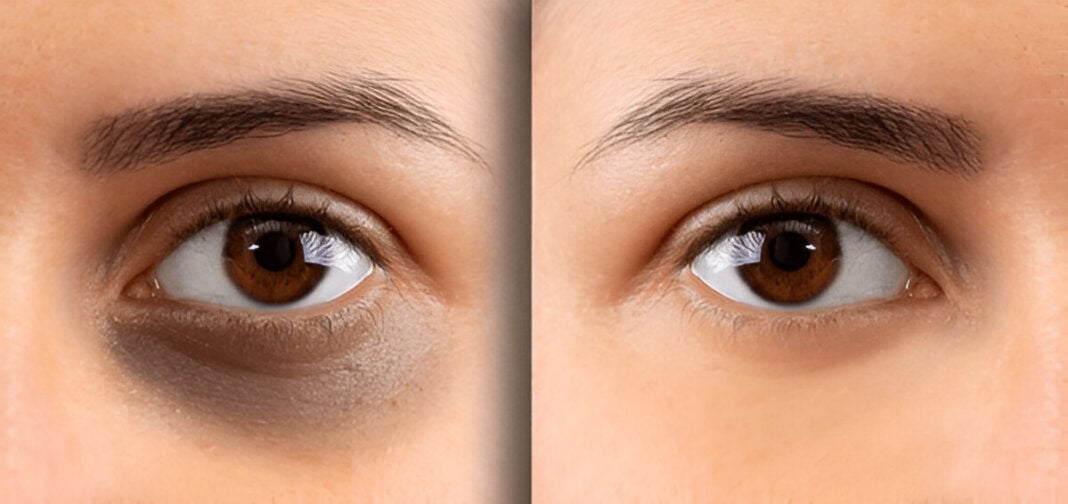Dark circles and under-eye bags are two of the most common beauty concerns for both men and women. While they’re often associated with fatigue, their causes are more complex and multifactorial. From genetics to lifestyle choices, these under-eye woes can reflect more than just a few sleepless nights. The good news? There are natural remedies that can help reduce their appearance and restore a fresher, more youthful look.
What Causes Dark Circles and Eye Bags?
- Genetics: Sometimes, dark circles and puffiness are inherited traits. People with a family history of periorbital hyperpigmentation (darkening of the skin around the eyes) or thin under-eye skin may be more predisposed to developing noticeable circles and bags (Sheth & Pandya, 2011).
- Fatigue and Sleep Deprivation: A lack of adequate rest can cause blood vessels under the thin under-eye skin to dilate, leading to a darker appearance. Sleep deprivation also contributes to fluid retention, causing puffiness and bags.
- Aging: As we age, collagen and elastin levels decline. This causes the skin to thin and lose its firmness, making blood vessels more visible and fat pads more prominent, resulting in both dark circles and eye bags (Ganceviciene et al., 2012).
- Allergies: Seasonal allergies or chronic nasal congestion can trigger under-eye puffiness due to inflammation and fluid buildup. Rubbing your eyes, a common response to irritation, also contributes to darkening the delicate skin (Khurana et al., 2015).
- Dehydration and Poor Diet: Lack of water intake and diets high in salt can lead to fluid retention and poor circulation, which can accentuate puffiness and discoloration.
- Sun Exposure: Too much sun can increase melanin production and make dark circles worse. UV exposure also accelerates collagen breakdown, compounding the problem over time.
Natural Remedies for Dark Circles and Eye Bags
While cosmetic treatments and skincare products exist, many people are looking for more natural, cost-effective solutions. Here are some tried-and-true methods you can do at home.
- Cold Compresses: Applying a cold compress for about 10–15 minutes in the morning can help constrict blood vessels, reducing both discoloration and puffiness. You can use chilled cucumber slices, cold tea bags, or even a spoon cooled in the refrigerator.
- Green Tea Bags: Green tea is rich in antioxidants and caffeine, which can help shrink blood vessels and reduce inflammation. After brewing, cool the tea bags in the refrigerator and place them over your closed eyes for 10–15 minutes (Cheng et al., 2014).
- Cucumber Slices: Cucumbers have a high water content and soothing properties. Their cooling effect can help hydrate the skin and reduce swelling, making them a classic natural remedy.
- Aloe Vera Gel: Aloe vera is a gentle moisturizer with anti-inflammatory properties. Applying a small amount under the eyes before bedtime can help improve skin texture and minimize puffiness over time.
- Adequate Sleep: Prioritize getting 7–9 hours of quality sleep per night. Elevating your head with an extra pillow can also help reduce fluid buildup under the eyes.
- Hydration and Diet: Drink plenty of water throughout the day to stay hydrated. Limit salt intake and include foods rich in vitamins C and K, like citrus fruits and leafy greens, which support healthy circulation and skin repair (Pullar et al., 2017).
- Gentle Massage: Lymphatic drainage massage around the eyes using your ring fingers can stimulate circulation and reduce fluid retention. Always use a light touch and work from the inner to the outer corner of the eyes.
- Natural Oils: Almond oil and vitamin E oil are both nourishing and rich in antioxidants. Gently massaging a drop under the eyes before bed may help lighten dark circles and soften fine lines over time.
When to See a Professional
If your dark circles or eye bags persist despite natural efforts, or if they worsen suddenly, it may be time to consult a dermatologist. Underlying health conditions such as thyroid problems, anemia, or chronic allergies could be contributing to the issue.
Dark circles and under-eye bags are more than just a cosmetic nuisance they can signal lifestyle imbalances or genetic tendencies. Fortunately, with consistent care and natural treatments, their appearance can often be significantly improved. Remember, true beauty isn’t about perfection but about feeling confident and well-cared-for in your own skin.
References:
Cheng, C. Y., Yen, C. H., & Chen, C. H. (2014). Green tea catechins and their oxidative protection on skin. Current Pharmaceutical Design, 20(15), 2581–2589.
Ganceviciene, R., Liakou, A. I., Theodoridis, A., Makrantonaki, E., & Zouboulis, C. C. (2012). Skin anti-aging strategies. Dermato-Endocrinology, 4(3), 308–319. https://doi.org/10.4161/derm.22804
Khurana, A., Bajaj, D. R., & Mahajan, S. (2015). Role of allergy in chronic periorbital dark circles. Indian Journal of Dermatology, 60(6), 539.
Pullar, J. M., Carr, A. C., & Vissers, M. C. M. (2017). The roles of vitamin C in skin health. Nutrients, 9(8), 866. https://doi.org/10.3390/nu9080866
Sheth, V. M., & Pandya, A. G. (2011). Periorbital hyperpigmentation: A review of the literature. Journal of Drugs in Dermatology, 10(9), 1052–1059.











